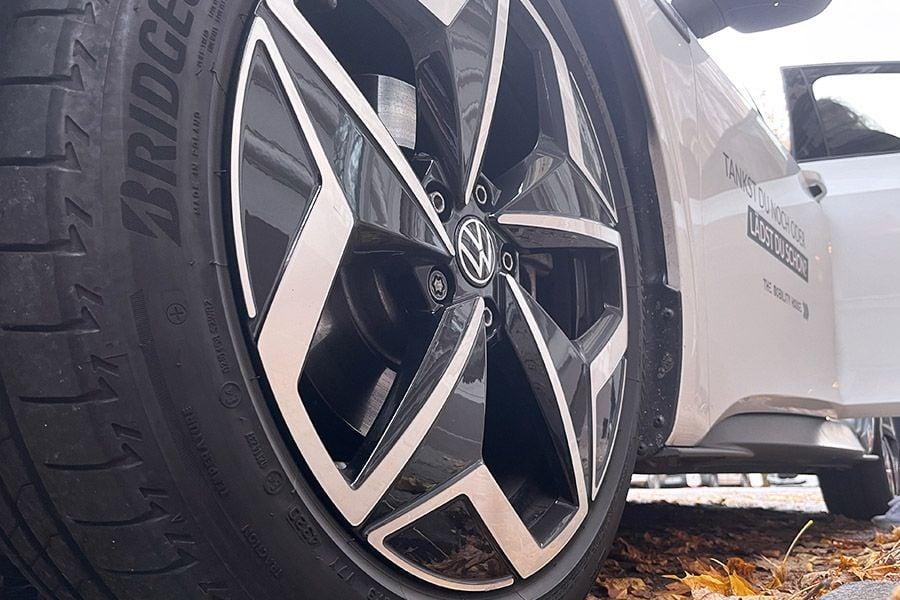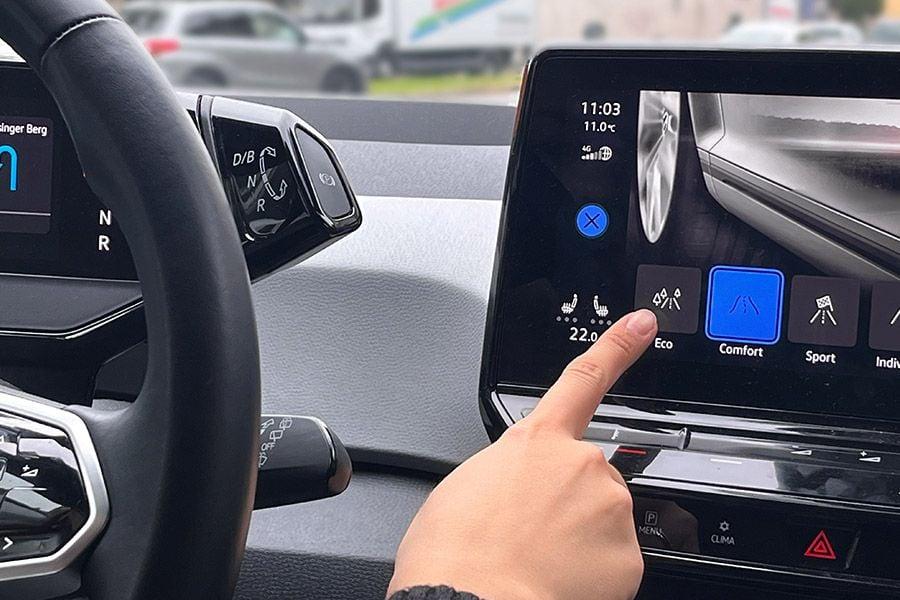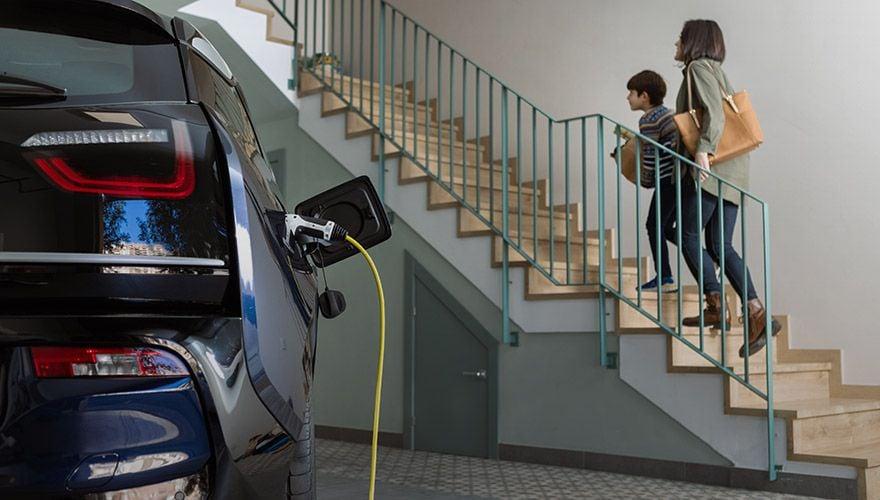Energiesparendes Fahren: die Grundlagen
Saving energy starts with choosing the right electric car. When making your purchase, make sure you have the right battery capacity. It should match your regularly required range and charging time. Because the bigger the battery, the heavier it is. And a heavier weight means higher energy consumption. This doesn’t just take its toll on the environment, but on your wallet too.
Example: If you commute daily and travel a great deal for business, a BMW iX3 with a 80 kWh battery (range: around 450 kilometers) may be worthwhile. If you are more of an occasional driver who takes short trips of up to 30 kilometers a day, then a Fiat 500 Electric with 24 kWh battery capacity and 180 kilometer range is more likely to be suitable.
It is also advisable to charge the electric car at a wallbox instead of at a standard domestic socket. Not only does this allow you to charge your car faster and more safely; you can also do so more efficiently – because according to a study conducted by the General German Automobile Club (ADAC) in September 2022, charging losses of up to 30% occur at a domestic socket, depending on the vehicle model.
A driver’s individual driving style and charging behavior have the greatest impact on an electric car’s energy consumption. Apart from that, other factors also include the outside temperature – but this is not something we have any control over.
Details such as the correct tire pressure and rim size also have an impact on an electric vehicle’s range. To cut consumption, we recommend using the smallest rim size possible. In the Nissan ARIYA, for example, the smaller rim size of 19 inches – compared with 20 inches – accounts for an increase of up to 30 km in range.
Narrow, rolling resistance-optimized tires with aerodynamically closed rims have an equally positive effect on drag. About 0.2 bar of extra tire pressure usually isn’t a problem and can provide additional range.
As is also the case with the internal combustion engine. Avoid unnecessary luggage in the trunk or on the car roof. The lower the vehicle weight and drag, the more energy efficiently you drive.

Improved range through recuperation
The term “recuperation” describes the technical process of recovering energy when slowing down hybrids or pure electric cars. The “deceleration” happens when you take your foot off the gas pedal a little without touching the brake pedal. Recuperation is precisely this noticeable resistance.
The electric motor converts the kinetic energy generated during driving back into electrical energy. This is stored in the battery and provides greater range in the electric vehicle.
If your electric car offers several recuperation levels, choose the highest one if possible. This means that the vehicle decelerates more and, accordingly, more energy can be recovered. This is particularly relevant in urban traffic where you are stopping frequently.
In Volkswagen ID models, for instance, you can select Brake mode (“B” gear selection). Then energy recovery in overrun mode – i.e. when the foot is taken off the gas pedal – almost always takes place. The deceleration is noticeable, but the car does not come to a complete stop.
Good to know: How much energy is it possible to recover through recuperation?
If you make full use of recuperation and also practice anticipatory driving, you can increase the range and recharge the battery a little at a time.
However, you can’t replenish the lost electricity through recuperation entirely – at some point, you’ll still have to go to the charging station to recharge your vehicle.
However, experienced drivers of electric cars can save about 20 % of energy during the recovery process, thereby generating significantly more range.

From coasting to one-pedal driving
It’s quite clear that fast driving has the greatest impact on range. You will notice this if you’ve ever traveled longer distances on the highway. This is because high speed requires more energy due to the stronger drag. So, especially in urban traffic, the rule of thumb is to accelerate gently to save energy.
We advise that inexperienced drivers of electric cars use the Eco or Energy Saving program. Depending on the situation, the car switches off power-consuming functions such as seat heating and enables coasting or recuperation mode, for example. When you put your foot on the gas pedal, you will also notice that the engine’s power and your electric car’s associated top speed are limited in the Eco program.
Ideally, you let the electric car coast when you want to slow down. Coasting is the best way to drive in an energy-efficient manner. When coasting, you use the vehicle’s kinetic energy. Often, Eco mode sets the coasting function automatically depending on the situation.
With one-pedal driving, you control the car with just one pedal, allowing you to both accelerate and (gently) brake. The “e-pedal” can be found in the Nissan LEAF or Tesla models, for example.
For the battery’s sake: avoid extreme temperatures
In fall and winter, it makes sense to park your electric car in your garage and charge it straight after your trip.
The energy for the heating is fed directly from the battery, which is why the range can differ up to 35 % depending on the season. When outside temperatures are cold, you should use as much close-to-the-body heating as possible, since it is more effective than air heating in the car. So it’s better to switch on the seat heating than the fan.
Our tip: Conveniently pre-heat your electric car – using the likes of the app. Because, while the electric car is connected to the power grid, the energy does not come from the drive battery – and you get straight into a comfortably warm car. If you choose in your vehicle app to start charging at 10 pm, you can have the heating or air conditioning start at 7 am.
Especially during the colder half of the year, you should also avoid driving short distances with the electric car, especially with long idle times in between. In winter, the icy temperatures cool down the vehicle’s interior and battery. Heating up again costs a great deal of energy and, if the battery is cooled, range as well.

Where, how and when: charging 101
You can save just as much energy by charging your electric car properly. Generally speaking, it is advisable to charge your electric car as often as possible at home at the domestic wallbox – which is usually a great deal cheaper than at public charging stations.
In the best-case scenario, you’ll use electricity you’ve generated yourself from a PV installation. This therefore makes you more independent of rising electricity prices, and even emission-free in transit. It is also helpful to keep an eye on the weather and, when the sun is shining, to charge the electric car at the wallbox using the solar power generated.
With regard to the charge level, it is important to avoid extreme conditions, because when the battery is completely full or discharged, the lithium-ion cells are severely stressed. A battery level of 20% to 80% is ideal. You can set the desired final charging state using the likes of the app.
It is also advisable to use fast charging only in moderation. This conserves the battery. So it’s best to charge at a lower capacity except when you’re heading off on vacations and day trips.
Good to know: Is fast charging worth it?
- It depends. Here, it is important to pay close attention to the charging station’s electricity prices, because they vary enormously.
- Fixed prices are charged under some tariffs, and don’t become more expensive quickly even if electricity prices rise.
